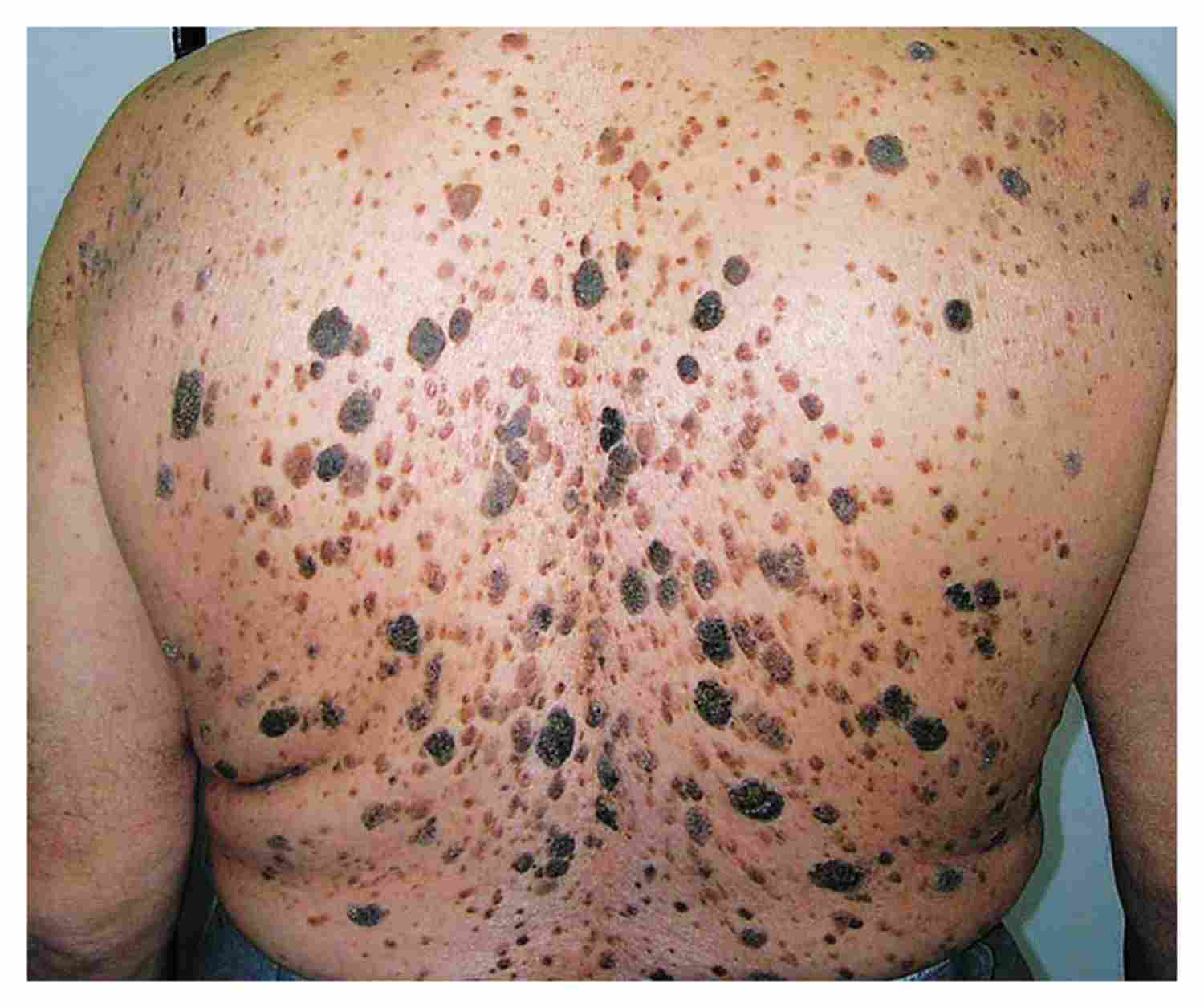
Jim is a 41-year-old farmer in southern Australia who presents with multiple brown plaques on the torso.
He first noticed “a few” of these plaques on his chest and back about three months ago, but they have since spread significantly.
Jim enjoys robustly good health and tries to avoid seeing the doctor; he has not needed a checkup for years.
These “annoying spots” are his only symptom of note — mostly concerning him because they catch on clothing and get itchy.
Jim has not travelled overseas, preferring to holiday locally and generally in cool climates.
Examination findings are significant for the lesions shown and features suggestive of acanthosis nigricans in both axillae. Urinalysis is negative.
What is the diagnosis?
Correct!
The image shows the Leser–Trélat sign.
This is a rare skin disorder characterised by the abrupt development of multiple rapidly enlarging and multiplying seborrhoeic keratoses over several months.
It is typically associated with underlying malignancy — most commonly gastrointestinal adenocarcinoma but also breast, lymphoma and other visceral cancers.
Cases have been reported in association with non-malignant conditions, including HIV, HPV, leprosy, COVID-19, pregnancy and benign neoplasms, as well as in the absence of an associated disease.
The pathogenesis is unknown, but it is thought the condition may be driven by tumour-associated or inflammatory cytokines and other growth factors.
Pruritis may be the only associated symptom apart from the obvious skin lesions. Malignant acanthosis nigricans is a common associated clinical feature.
Given the strong association with malignancy, careful investigation is warranted.
On further assessment, this otherwise asymptomatic patient was found to have a moderately differentiated colorectal adenocarcinoma of the sigmoid colon.
Treatment of the underlying cause results in resolution in around 50% of cancer-associated cases.
Persistent symptomatic lesions may be managed with antipruritic measures and/or ablative approaches.
